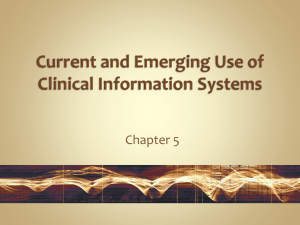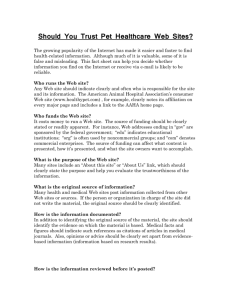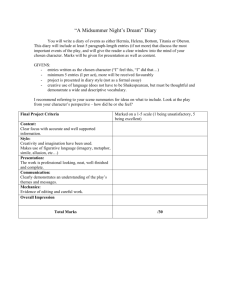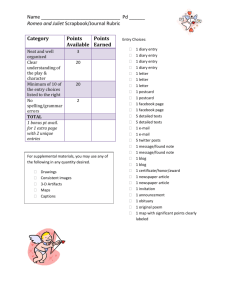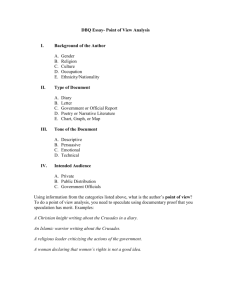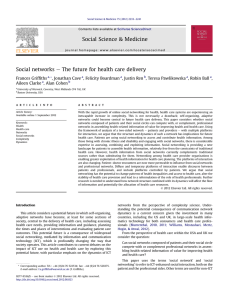PowerPoint bemutató
advertisement
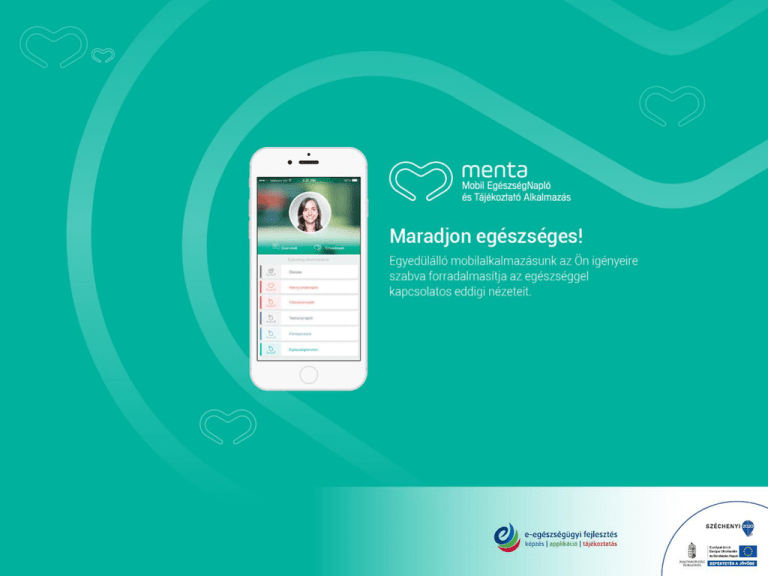
The „MENTA” concept Creating a new and practical tool as an everyday solution of health-related problems Richárd Faller Service areas of the new form of care Primary care Prevention Health promotion Staying healthy Automatic and continuous health monitoring Public health Improving health consciousness Secondary care Supplement of clinical treatments Patient information Self care Telemedicine Sharing medical information Criteria Data management Equal opportunities, platform Ergonomics, usability Motivation Self-learning Time and cost effective Developing ecosystem (with primary care developments) Free availability Achieving population, expand target audience Health-related use of the Internet in Hungary Tamás Tóth International perspective Norway Denmark 2001 2002 Germany Greece Portugal 80 70 60 (%) 50 40 30 20 10 0 2000 2003 2004 2005 2006 2007 Source: Per Egil Kummervold, Rolf Wynn: Health Information Accessed on the Internet: The Development in 5 European Countries, International Journal of Telemedicine and Applications, Volume 2012 Goals and methodology Research Distribution of responders Purpose Total: 686 persons Survey of health-related use habits of the Internet and smartphones by the Hungarian population Methodology Online questionnaire Personal questionnaire (at Budapest and the countryside) By gender Female: 63% Male: 37% By age 18-29 years: 42% 30-49 years: 34% Over 50 years: 22% By place of resident Budapest: 55% Countryside: 45% Group of questions Demographic data Penetration of ICT devices Distribution of smartphone platforms Typical search for medical topics Subjective evaluation of online information Usage of the medical applications Results Health information on the Internet Popular health topics How useful was it? 90% 9% 80% 30% 18% 70% 60% 50% 43% 40% 30% Significantly 20% Moderately Sightly Not at all How misleading was it? 10% 0% 3% 14% 13% 70% 18-29 years 30-49 years over 50 years Significantly Moderately Sightly Not at all Penetration of mobile devices and platforms Number of smartphones in Hungary* Platforms 4,000,000 3% 3,500,000 11% 3,000,000 2,500,000 2,000,000 1,500,000 1,000,000 23% 500,000 63% 0 Android *Source: Napidroid.hu, NRC-Ariosz iOS Windows Other Penetration of health-related mobile applications* Medications Health promotion Self-monitoring 0% 5% 10% 15% *proportion of smartphone and / or tablet holders 20% 25% 30% 35% 40% 45% Summary Hungarian population – similarly to the international trends – significantly use the Internet to search for health-related information Nearly 80% of the responders choose one of the health topic Popular health topics: diseases, health professionals, health promotion 91% of the responders find useful information, but 30% of it was misleading 48% of the responders use at least one health-related mobile applications (most of them: health promotion) 86% of the devices use Android or iOS platforms Functions of MENTA István Kalmár Function map of MENTA Personal Health Record My Profile User data History of health data Emergency data Medications data Health Diaries Blood Pressure Diary Blood Glucose Diary Weight Diary Nutrition Diary Fitness Diary Respiratory Diary Health Plans Services Information Center – Knowledge Base Disease Guide Interactive symptom checker Drugs and medication A-Z Drug database Drug finder Drug information Informative maps and descriptions Screening campaigns and patients’ rights External news feeds Find A Provider Find an hospitals and special clinics Find a pharmacy Find a health professional Search on interactive maps By name or Prof. ID By address By profession By type of care Medical e-Log and Notifying Therapy Application Sándor Békási MD Previous mHealth Research Conclusions Hungarian population uses the Internet widely to search for health-related information Most popular search expressions are about diseases, health professionals and health promotion >90% find useful information, but more than 30% is misleading 48% use at least one healthrelated mobile app 21st Century Standards Users, not patients Establishment of a new mHealth ecosystem Prevention-focused Improving health consciousness and self-awareness High level data security Excellent UX design Self-learning system Practical approach Time and cost effectiveness Free availability My Personal Health Records In-app patient register on medical history, current chronic diseases and treatments PHR and EHR on the same interface after user identification Health diaries monitoring weight, nutrition, fitness, blood pressure, blood glucose and respiratory function GP consulting from home through the app My Health Plans Modules to achieve the main health goals step by step Input data based on health diaries Practical advice and continuous feedback Interactive communication Motivation through gamification Information Hub and Service Center Relevant patient information (Disease guide, Symptom checker, Drug database) Screening campaigns and patients’ rights Personalized news feeds Search for health care providers or professionals Telemedicine and 3rd party apps Telemedicine modules for connectible devices Direct link to specialists Application Programming Interface (API) for 3rd party developers

